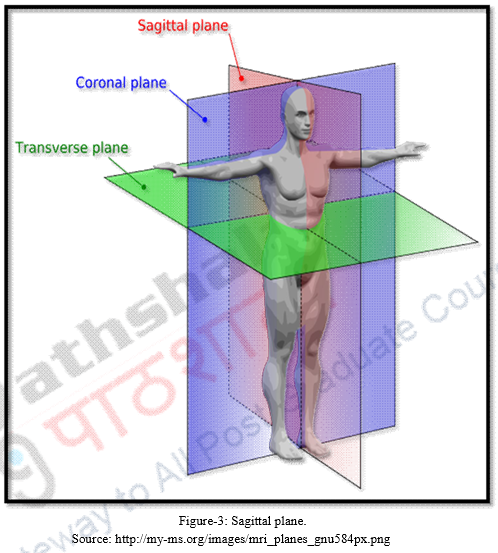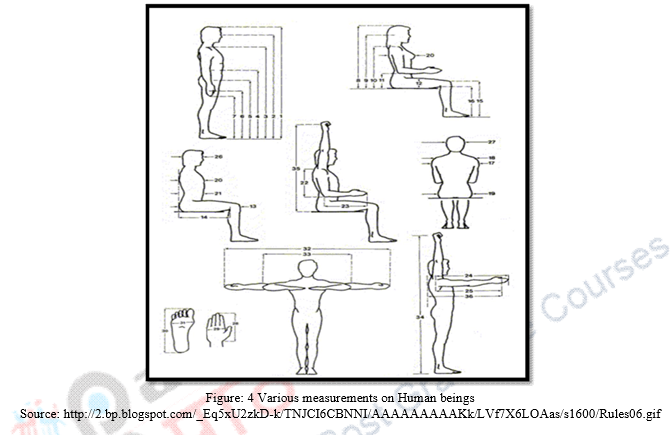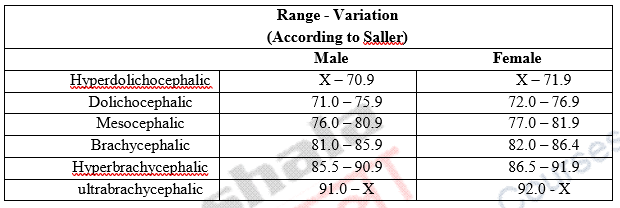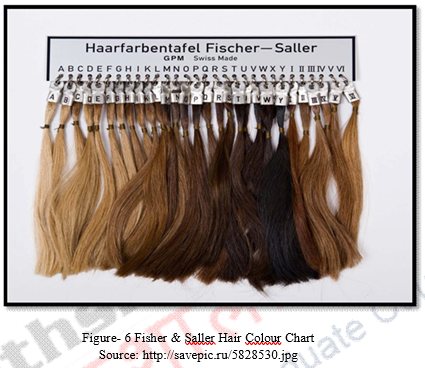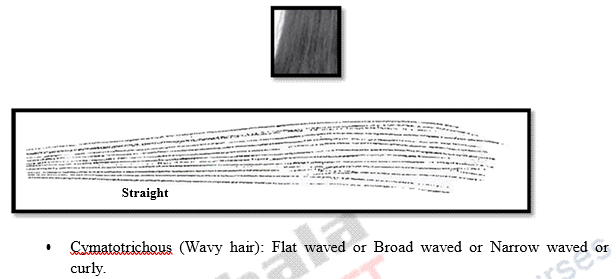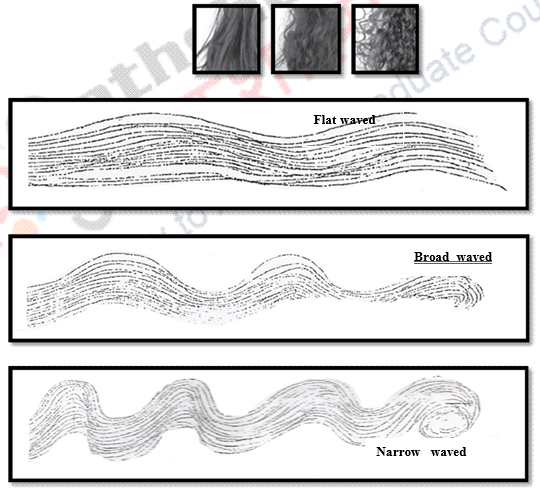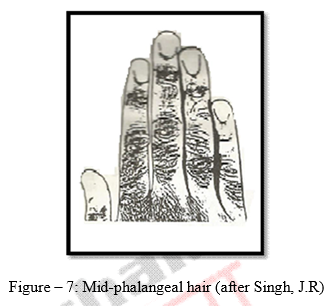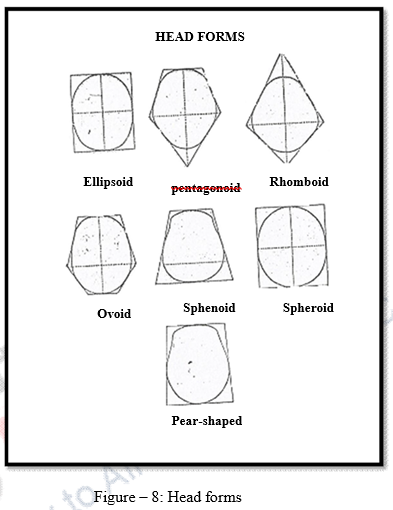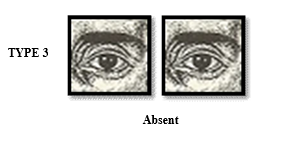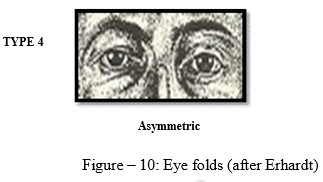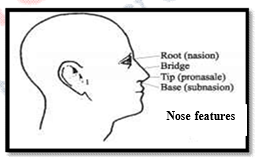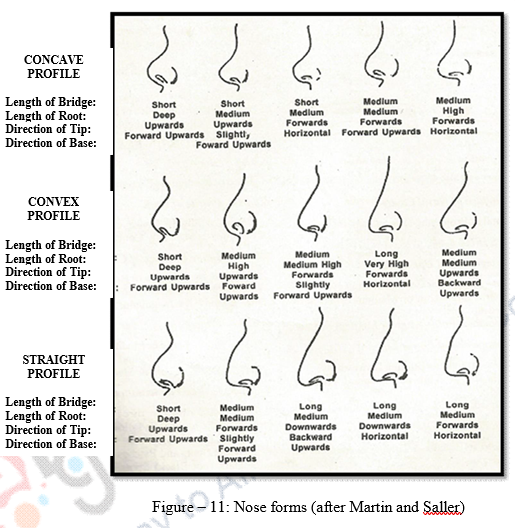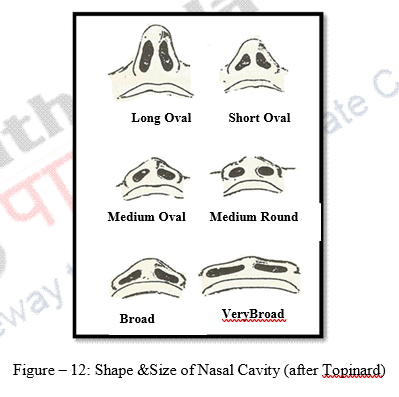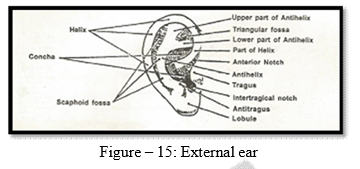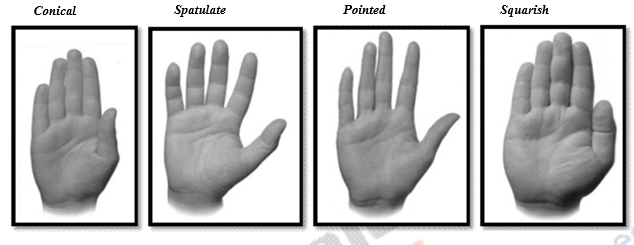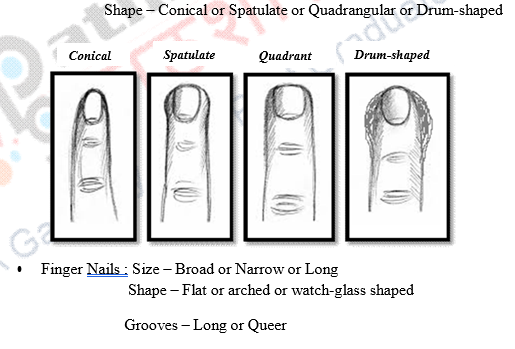21 Identification through Somatometric and Somatoscopic Observation
1. Introduction
Identification by means of somatometric and somatoscopic technique includes primarily observation of an individual’s personality characteristics. Identification or more specifically personal identification refers to determination of individuality of an individual, based on certain characteristics. These characteristics are fixed, unaltered and unique to every individual and thus distinguish him/her from every other individual which ultimately leads to their identification. Identification that is recognition of a person concerned occupies relatively centeral place both in anthropological research, forensic examination and criminal proceedings. Identification is necessary in civil courts in case of impersonation in order to unlawfully secure property, life insurance payments or to prolong a lapsed pension, and in case of disputed sex; and in criminal courts, in connection with absconding soldiers and criminals or person accused of assault, rape, murder etc. Again Identification is very essential in case of fire, explosives, railway accidents, foul play, mass disasters, flood, earthquake, war etc. Thus, now- a- days it becomes crucial to authenticate identity due to security reasons.
How a Forensic anthropologist establishes the identity of an individual?
Forensic anthropologists employ various techniques or methods for identification.
- Somatometric and Somatoscopic technique.
- Hand Writing analysis,
- Fingerprint comparison,
- Forensic genetics,
- Molecular biology, in particular, DNA.
This particular module deals with the Somatometric and somatoscopic techniques of identification.
2. Somatometry
Somatometry is the systematic study of the measurements of various parts of the human body. Identification through Somatometry is accomplished by a series of required bodily measurements. In 1879, Alphonse Bertillon, a French anthropologist, chief of the identification bureau of Paris, introduced a system of identification called Bertillon system of identification. It was a system of identifying people by their physical appearance. Various measurements were taken and recorded from various parts of the body. Also Bertillon system includes observation of peculiar marking moles, scars, tattoo marks, birth marks, occupational marks, acquired malformations and personality characteristics such as colour of hair, eyes, teeth, complexion, shape of nose, ears, chin, race, religion & caste, sex, age, social status etc. These observations are collectively referred to as somatoscopic observations will be dealt in next section.
In the Bertillon system of identification characteristics of the individuals registered under three heads, viz.-
- Descriptive data: such as colour of hair, eyes, teeth, complexion, shape of nose, ears, chin, race, religion & caste , sex, age, social status etc.
- Bodily marks: such as moles, scars, tattoo marks, birth marks, occupational marks, acquired malformations.
- Bodily measurements: eleven in number, viz.,
- Standing height
- Sitting height,
- The length and breadth of the head,
- The breadth of the face,
- The length of right ear,
- The span of the out-stretched arms,
- The length of the left foot,
- The length of the left middle finger,
- The length of the left little finger,
- The length of the left forearm, and
- The length of the hand.
2.1 Instruments used for Somatometric Measurements
Anthropologists employ number of instruments for taking accurate measurements of the human body. Commonly used instruments are listed below:
1. Anthropometer rod: It is the most commonly used instrument for linear measurements. Generally used to take height measurements as well as transverse breadths of the human body. Anthropometer rod is divided into four segments which when joined together form a rigid rod of 200 cm. Anthropometer rod contains fixed sleeve on top of the rod in which a adjustable graduated cross bar passes. Rod also contains a movable sleeve with an adjustable graduated cross bar which is responsible for registering height measurements.
2. Rod Compass: First segment of anthropometer rod is known as rod compass. Out of the four segment, the top segment with fixed sleeve act as a rod compass. This is generally for measurements or heights which are shorter in length and can be performed with only one segment of anthropometer rod.
3. Spreading calliper: Spreading are made in two sizes, one of 25 cm for taking smaller measurements and another of 60 cm for taking the measurements on pelvis that is pelvimeter. Spreading calliper with both the sizes are of two kinds, one having blunt ends and other sharp pointed ends. Calipers with blunt ends are used for taking measurements on the living whereas with pointed ends for taking measurements on skeletons. Spreading calliper with whatever size consists of two long arms which are curved outwards and bounded at one end. A meter scale of 25 cm is fixed in one of the arms, the meter scale passes through a socket on the other arm.
4. Sliding calliper: Sliding callipers are used for taking shorter breadths. It has 25 cm long straight bar. It has 12.5 cm long fixed arm at one end and also has a sliding sleeve with 12.5 cm long arm parallel to the fixed one. The arms are projected on the both sides of the scale to an equal distance. They end up in blunt end at one side and sharp pointed end at other side. The blunt ends are used for taking measurements on the living whereas sharp pointed ends are used for taking measurements on skeletons.
5. Measuring Tape: Measuring tape is generally used to measure girth or circumference of various parts of the body. It is made up of steel. It is graduated in mm and the width of the tape is about 1 cm.
2.2 Techniques for Somatometric Measurements
- Measurements of the various parts of the body should be done with the minimum number of clothes to minimize the errors & also to locate landmarks accurately.
- Subject should be informed about the measurement which has to be taken.
- The subject should stand erect on a level floor against the wall with his back and hips touching the wall.
- Measurement should be taken on the subject standing barefoot. The feet should make an acute angle and heels must touch the walls.
- Subject should be in standard arm hanging position that is arms should hang freely on the sides of the subject and hands should touch the thighs. The shoulders should not be raised upwards.
- Measurement should be taken from the right side of the subject because it is convenient to work with the instrument from right side.
- The head of the subject should be oriented in eye-ear plane (tragion and two orbitale must lie in same plane) without any strain.
- The subject should not change his position when the measurements are being taken.
- Landmarks should be carefully located and marked with skin – marking pencil before taking measurements.
- Anthropometer should be kept vertically for all the vertical measurements and reading should be taken at the upper border of the movable socket when the point of the cross bar touches the landmark.
- Measurements should be recorded carefully.
2.3 Landmarks for Somatometric Measurements
- Acromion (a): It is the most laterally placed point on the lateral margin of the acromial process of scapula when the subject stands in standard arm hanging position. It is located by palpating the scapular spine with the fingers.
- Acropodion (ap): It is the most distally placed point on the tip of the longest toe (first or second toe) when the foot is stretched to the maximum.
- Alare (al): It is the most laterally placed point on the nasal wing and is determined at the time of measuring the nasal breadth.
- Cervicale (c): It is the point on the tip of 7thcervical vertebra. To locate the landmark subject should ask to bend forward so as to clearly distinguish between 7th cervical vertebra and first thoracic vertebra.
- Chelion (ch): It is the meeting point of upper and lower lateral margins of the lip (Corners of the mouth).
- Dactylion (da): It is the most distally placed point on the anterior margin of the middle finger when the subject is in standard arm hanging position.
- Ectocanthion (ec): It is the point on the lateral side of the eye where the upper and lower eyelid-margins meet.
- Ecdocanthion (en): It is the point on the medial side of the eye where the upper and lower eyelid-margins meet.
- Euryon (eu): It is the most laterally placed point on the sides of the head and is only determined by measuring maximum head breadth
- Frontotemporale (ft): It is the most anterior and inner point on the linea temporalis on the frontal bone. It usually lies slightly higher than the tangent drawn on the highest elevation of the upper margins of the eye brow ridges.
- Glabella (g): It is the point on the protuberance of the forehead between the eye brow ridges above the nasal root and intersected by mid-sagittal plane.
- Gnathion (gn): It is the lowest point on the lower margin of the lower jaw intersected by mid- sagittal plane when the head of the subject is oriented in eye-ear plane.
- Gonion (go): It is the most posterio-lateraly placed lowest point on the angle of the lower jaw.
- Iliocristale (ic): It is the most laterally placed point on the lateral border at the upper margin of the iliaccrest.
- Iliospinale anterior (isa): It is the highest point on the superior anterior iliac spine.
- Iliospinale posterior (isp): It is the most posteriorly placed point on the superior posterior iliac crest.
- Inion (i): It is the point on the posterior side of the head at the meeting region of the nuchal lines or at the junction between the posterior protuberance and the neck.
- Labrale Superior (ls): It is the point on the upper margin of the integumental lip intersected bymid-sagittal plane.
- Labrale Inferior (li):It is the point on the lower margin of the integumental lip intersected by mid-sagittal plane.
- Mesosternale (mst): It is the point on the anterior border of the sternum where mid-sagittal plane cuts the line joining the particular surface of the fourth rib.
- Metacarpale radiale (mr): It is the most medially placed point on the tip of the second metacarpal in a stretched hand.
- Metacarpale ulnare (mu): It is the most laterally placed point on the tip of the fifth metacarpal in a stretched hand.
- Metatarsale fibulare (mft): It is the most laterally placed point on the tip of the fifth metatarsal.
- Metatarsale tibiale (mtt): It is the most laterally placed point on the tip of the first metatarsal.
- Metopian (m): It is the point on the highest protuberance of the frontal bone of the head intersected by mid-sagittal plane.
- Nasion (n): It is the point on the nasal root intersected by mid-sagittal plane.
- Opisthocranion (op): It is the most posteriorly placed point on the posterior protuberance of the head in the mid-Sagittal plane and is determined by measuring maximum head length.
- Orbitale (or): It is the deepest point on the lower margin of the orbit.
- Pro-nasale (prn): It is the most anteriorly placed point on the tip of the nose when the head is oriented in mid-sagittal plane.
- Prosthion (pr):It is the most downwardly placed point on the lower margin of the gums of upper jaw between the middle incisors in mid-sagittal plane.
- Pternion (pte): It is the most posteriorly placed point on the heel in mid-sagittal plane of stretched foot.
- Radiale (r): It is the highest point on the upper margin of the radiale capitulum when the subject is oriented in standard arm hanging position. The landmark is accurately determined by pronating and supinating the lower arm.
- Spherion (sph): It is the lowest point on the tip of the medial malleolus of tibia when the subject is oriented in standard arm hanging position.
- Stomion (sto): It is the point where the slit of the mouth with close lips cuts the mid-sagittal point.
- Stylion (sty): It is the deepest point on the styloid process of radius when the subject is oriented in standard arm hanging position.
- Subaurale (sba):It is the lowest point on the lower margin of the ear lobe.
- Subnasale (sn): It is the point where lower margin of nasal septum meets the integument of the upper lip in mid-sagittal plane.
- Substernale (ss): It is the lowest point at lower edge of the sternum in mid-sagittal plane.
- Superaurale (sa): It is the highest point on the margin of the helix when the head of the subject is oriented in eye-ear plane.
- Supersternale (sst): It is the point on the upper margin of the sternum intersected by mid- Sagittal plane.
- Symphysion (sy): It is the point on the upper margin of the symphysis of pubic bone in mid- sagittal plane.
- Tibiale (ti): It is the highest point on the head of tibia on the inner glenoidal margin.
- Tragion (t): It is a point on the upper margin of tragus. This landmark is determined by the intersection point of the tangents drawn from the anterior and upper margin of this cartilage.
- Trichion (tr): It is the point where the anterior border of the hair on the forehead cut by the mid-sagittal plane.
- Vertex (v): It is the highest point on the head when the head is oriented in eye-ear plane.
- Zygion (zy): It is the most laterally placed point on Zygomatic arch and is determined by taking bizygomatic breadth.
2.3 Somatometric measurements generally used for identification.
- Height vertex or stature: It measures the vertical distance from vertex (v) to floor when the subject is in standard arm hanging position.
- Sitting height vertex:It measures the straight distance from vertex (v) to sitting surface of the subject when the subject is oriented in standard position with head oriented in eye-ear plane and vertebral column stretched to the maximum.
- Maximum head length (g-op):It measures the maximum straight distance from glabella (g) to opisthocranium (op) when the head is oriented in eye- ear plane.
- Maximum head breadth (eu-eu): It measures the maximum straight distance between the two eurya (eu) when the head is oriented in eye- ear plane.
- Maximum Head circumference (g-op-g): It measures the circumference from glabella (g) to Opisthocranium (op) to glabella (g)when the head is oriented in eye-ear plane.
- Minimum Frontal breadth (ft-ft): It measures the minimum distance between the two fronto- temporalia (ft)when the head is oriented in eye-ear plane.
- Maximum bizygomatic breadth (zy-zy): It measures the straight distance between the most laterally placed zygia (zy)when the head is oriented in eye-ear plane.
- Bi-gonial breadth (go-go): It measures the straight distance between two gonia (go) when the head is oriented in eye-ear plane.
- Bi-cristal breadth (ic-ic): It measures the straight distance between the two iliocristralia (ic).
- Nasal height (n-sn): It measures the straight distance between nasion (n) to subnasale (sn) when the head is oriented in eye-ear plane.
- Nasal length (n-prn): It measures the straight distance between nasion (n) to pronasale (prn) when the head is oriented in eye-ear plane.
- Nasal breadth (al-al): It measures the straight distance between the two laterally placed alaria (al) when the head is oriented in eye-ear plane.
- Physiognomic facile height (tr-gn): It measures the straight distance between trichion (tr) to gnathion (gn) when the head is oriented in eye-ear plane.
- Morphological facial height (n-gn): It measures the straight distance between nasion (n) to gnathion (gn) when the head is oriented in eye-ear plane.
- Physiognomic upper facial height (n-sto): It measures the straight distance between nasion (n) to stomion (sto) when the head is oriented in eye-ear plane.
- Morphological upper facial height (n-pr): It measures the straight distance between nasion (n) to prosthion (pr) when the head is oriented in eye-ear plane.
- Body weight: Weight should be taken with standard weighing machine with minimum number of clothes and subject should stand erect and barefooted.
- Skinfold measurements: Skin fold measurements provide a mean of estimating the amount of fat in the body. Biceps and triceps are well known sites for these measurements.
- Maximum calf girth: It measures the circumference of the calf where the calf muscles are well developed.
- Minimum waist girth: It measures the minimum circumference between the chest and hip or the narrowest part between the ribs and intestine.
- Maximum upper arm girth: It measures the maximum circumference of the upper arm where the biceps muscles are most developed. Measurement was taken horizontally.
- Chest girth: It measures the circumference of the chest when the subject was breathing normally. This measurement is also taken during maximum inspiration and maximum expiration.
- Hand length (isty-daIII): It measures the straight distance between the midpoint (interstylion- isty) of a line joining the two stylion to dactylion (daIII) of the middle finger.
- Hand breadth (mr-mu): It measures the straight distance between metacarpal radialis (mr) to metacarpal ulnare (mu).
- Total upper extremity length (a-daIII): It measures the straight distance between acromion (a) to dactylion (daIII) of the middle finger when the subject is in standard arm hanging position.
- Upper arm length (a-sty): It measures the straight distance from acromion (a) to stylion (sty).
- Forearm length (r-daIII): It measures the straight distance between radiale (r) and dactylion (daIII).
2.4 Somatometric indices generally used for identification
- Relative sitting height index: It is calculated by dividing sitting height vertex with height vertex and then multiplied by 100.
- Cephalic index = [(Maximum head breadth (eu-eu))/(Maximum head length (g-op))] x 100
- Morphological facial index = [(Morphological Facial Height (n-gn))/(Bi-zygomatic breadth (zy-zy)) ] x 100
- Nasal index = [(Nasal breadth (al-al))/(Nasal Height (n-sn ))] x 100
- Relative bi-acromial breadth index = [(Bi-acromial breadth (a-a))/(Height vertex (v-floor ))] x 100
- Relative Bicristal breadth index = [(Bi-cristal breadth (ic-ic))/(Height vertex (v-floor ))] x 100
- Relative chest girth index = [(Chest girth (circumference of the chest))/(Height vertex (v- floor ))] x 100
- Hand index = [(Hand breadth (mr-mu))/(Hand length (sty-da))] x 100
3. Somatoscopy
Somatoscopy may be referred to as the systematic study of the various parts of the body only through observation. As certain characteristics of human (colour of skin, eye, ear) can only be described through observation & description and not applicable for metrical analysis. These characteristics are collectively referred to as somatoscopic characteristics. The somatoscopic perception of various parts of the body has a great utility in identification of individuals and also in comparing different morphological human groups or discriminating racial groups.
3.1 Somatoscopic techniques
- To efficiently facilitate somatoscopic observation, standard photographs of the subjects by any standard camera may be taken.
- These photographs should maintain uniformity. That is camera should be placed at equal distances from all the subjects. The background should also be similar. Enlargement of the photographs should be made of equal size for comparison.
- Subject should stand in standard arm hanging position. The head of the subject should be oriented in eye-ear plane.
- Maximum characteristics are observed by keen observation of the individual rather than photographs and in proper day light.
- Standard charts are employed for comparison of certain characteristics such as colour of skin, eye, and hair.
3.2 Somatoscopic observations
3.2.1 Skin colour
Skin colour must be observed atleast at 4-5 sites of the body as several factors such as sunlight, oil, soap, disease, malnutrition, thickness of the epidermis, as well as climate change affect the colour of the skin. Hairs present on the body and Wrinkles tend to make the colour of the skin darker. Thus skin colour must be observed in daytime and with sufficient light. Skin colour determining sites include forehead, cheeks, abdomen above the navel, chest, shoulders, inner side of the upper arm, palm, inner side of the thigh, sole etc. The colour of the skin is determined by comparison with standard charts. In the charts such as Luschan chart or Broca chart, the following shades may be noted: Greyish Black or Blackish Brown, Dark Brown or Reddish brown or Brown or Light Brown or Olive Brown or Yellowish white or Carmine White.
Many-a-times colour photographs of the skin are taken with permission from the subject for efficient comparison. Now-a-days for somatoscopic observation of skin colour, spectrophotometry is used. It is regarded as the best and modern method. This however can only be done in laboratory and it is expensive which is the biggest drawback of this method.
3.2.2 Hair
Somatoscopic characteristics of hair include its colour, form, texture & quantity of hair.
3.2.2.1 Hair colour
Hair colour is determined by comparing the hair colour with the Fischer and Saller colour chart of 30 different shades.
In recording hair colour student should make sure that hair of the subject should not be artificially dyed and in case it is, it should be mentioned. Hair colour gets affected by use of hair oil, perfumes, ageing. Special mention has to be made if any of these factors are recovered. The thirty shades of natural colour can be categorized under three broad headings –
3.2.2.2 Hair form
Broadly divided into three types
- Lissotrichous (Straight hair): Straight or Sleek.
Student can pluck one hair of the subject for differentiation & identification of the forms of the hair.
3.2.2.3 Hair texture& Quantity
-
- Texture: Coarse or medium or fine
- Quantity: Thin or medium or normal or thick or dense
3.2.2.4 Hair whorl
Hair whorls are the centre of distribution of the head hair. It can be single, double or multiple. It usually lies towards the top on the back of head but can also occur in front above forehead.
The direction of distribution of hair differs around the hair whorl.
- Direction: Clockwise or Anticlockwise
3.2.2.5 Facial Hair
Facial hair is observed in the following area
-
- Eyebrows: Concurrence (Connected or separated), Thickness (Scanty, Medium and thick) and lateral extension.
- Beard & Moustache: Thickness (Normal, medium or thick)
3.2.2.6 Mid- Phalangeal Hair
Dorsal side of both hands on the mid-digits is observed in proper light with the help of hand lens. If hairs are present then denoted as ‘+’ and ‘-’ I f absent. If (1 to 5 hair) present then + and if (6 or more hair) then referred as plenty and denoted as ++.
3.2.3 Head form
Head form can be of the following types:
- Ellipsoid
- Pentagonoid
- Rhomboid
- Ovoid
- Sphenoid
- Spheroid
- Pear-shaped
3.2.4 Facialform
Facial form can be of the following types:
- Elliptical
- Oval
- Inverted Oval
- Round
- Rectangular
- Quadrangular
- Rhomboid
- Trapezoid
- Inverted Trapezoid
- Pentangular
3.2.5 Cheeks
Prominent or Medium or Deep or Shallow
3.2.6 Eyes
- Eye opening axis: Horizontal or Slanting or Oblique
- Direction: Outwards or inwards.
- Colour of iris: Black or Brown or Dark brown or light brown or greenish or dark grey or light grey or dark blue or blue or light blue or crimson red.
- Colour of sclera: Clear or speckled or yellow or dull.
- Eye folds:
Type 1- Complete or medium or light
Type 2- light equally arched or Lateral descending (internal) or Lateral ascending (external) or Narrow eyelids or upper eyelids
Type 3- Absent
Type 4- Asymmetric
3.2.7 Nose
Somatoscopic observation of nose is performed on the basis of following:
3.2.7.1 Nasal root
-
- Height above inner angle of eye – High or medium or low
- Depth from Glabella – High or medium or deep
- Breadth – Broad or medium broad or narrow
- Shape – quite flat or medium or high or very high
3.2.7.2 Nasal bridge
- Size – Narrow or medium or broad
- Shape from profile – Concave or convex or vertical
- Nasal bridge profile – Continuous or wavy angular
3.2.7.3 Tip of nose
- Projection – upwards or downwards
- Profile of tip – Rounded at point or fully rounded or flat
3.2.7.4 Nasal wings
- Thickness – Thick or medium or thin
- Height – High or low
- Bulge – Slight flat or slight or strongly bulging
3.2.7.5 Nasal septum
- Size – Long or medium or short
- Breadth – Narrow or broad
- Direction – Upwards or downwards or Horizontal
- Profile – septum visible or not
3.2.7.6 Nasal cavity
- Shape & Size – Very narrow or narrow or long oval or short oval or round or broad or very broad
- Size & Length – Small or big
3.2.7.7 Surface of nasal cavity
Horizontal or projecting downwards or Upwards
3.2.8 Lips
3.2.8.1 Integumental upper lips
- Form – Straight or Convex or Concave
- Membral Lip – Thin or Medium or Thick or Puffed-up
- Mentolabial fold – High or Medium or Broad
3.2.8.2 Integumental lower lips
- Form – Straight or Bulging Downwards
- Membral Lip – Thin or Medium or Thick or Puffed-up
- Mentolabial fold – High or Medium or Broad
3.2.9 Mouth
- Breadth of Mouth – Narrow or Medium or Broad
- Gums – High or Broad or Folded
- Tongue: Length – Large or medium or small
- Tip – Pointed or Round
- Thickness – Thin or Medium or Thick
3.2.10 Teeth
- Missing and defected teeth should be noted
- Dental formula:
Upper M3 M2 M1 P2 P1 CI2 I1 I1 CI2 P1 P2 M1 M2 M3
Lower M3 M2 M1 P2 P1 CI2 I1 I1 CI2 P1 P2 M1 M2 M3
- Size of individual teeth – very large or large or medium or small or very small.
- Dental arch: Shape – Rounded or semi – elliptical or parabolic or semicircular or angular or moderately equal. Symmetry – Symmetrical or Asymmetrical.
3.2.11 External ear
- Ear lobe: Presence – Present or Absent
Size – Long or medium or Short
Shape – Tongue -shaped or Triangular or Square or Arched
Thickness – Thick or Medium or Thin
Attachment – Free or Attached
- Darwin’s Tubercle – Present or absent
- Antihelix Curvature – Strong or Medium or Weak
- Antitragus – Strong or weak or Angularly Developed
- Helix and Antihelix – Equal to each other or Narrower or Broader
- Tragus or Antitragus: Size – Small or weak or Medium
Shape – Long or Round or Knob-shaped
- Scaphoid: Size –Broad or Middle or Narrow
Shape – Flat or Medium or Deep
3.2.12 Neck
- Length – long or medium or short
- Adam’s Apple Projection – Marked or Medial or slight
3.2.13 Hand
- Size – Small or Medium or Long
- Thickness – Plump or Medium or Narrow or Thin
- Shape – Conical or Spatulate or pointed or Squarish.
3.2.14 Fingers & Finger nails
- Fingers : Size – Small or Medium or Long
Thickness – Plump or Medium or Narrow or Thin
3.2.15 Foot
- Size – Small or Medium or Long
- Thickness – Plump or Medium or Narrow or Thin
3.2.16 Toes and toe Nails
- Fingers : Size – Small or Medium or Long
Thickness – Plump or Medium or Narrow or Thin
Shape – Conical or Spatulate or Quadrangular or Drum-shaped
- Toe Nails : Size – Broad or Narrow or Long
Shape – Flat or arched or watch-glass shaped
Grooves – Long or Queer
4. Summary
Identification can be established through somatometric as well as somatoscopic observation. It is well known that our eyes identify by outer appearance of the individual which can be defined as somatoscopic characteristics. It is very likely that two individual can possess five similar measurements but they will definitely differ in 30 measurements or more. All the measurements together define the individual characteristic of the person which will be unique. Somatometry proves helpful in conditions where mutilated or fragmentary remains are recovered. But Somatometric & Somatoscopic observation are the foremost criteria which forensic anthropologists perform depending upon the recovered remains of the individual. Anthropologists derive definite techniques and landmarks to reveal the identity of the individuals. Somatometric analysis involves measurement of various parts of the body and Somatoscopic analysis involves the systematic study of various parts of the body only through observation. As certain characteristics of human can only be described through observation & description and are not applicable for metrical analysis. These are Skin colour, Hair, Head, Face, Cheeks, Eyes, Nose, Teeth, Mouth, External ear, Lips, Hand, Fingers & Nails, Foot, Toe & Toe Nails, etc.
| you can view video on Identification through Somatometric and Somatoscopic Observation |


